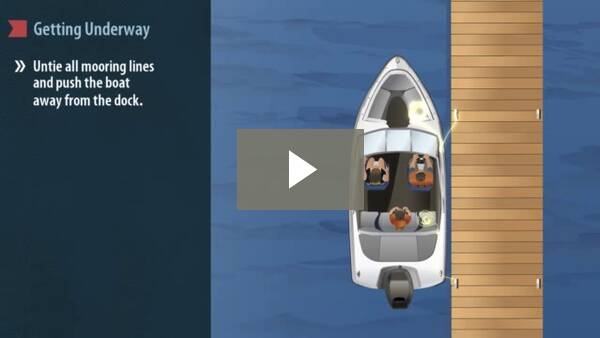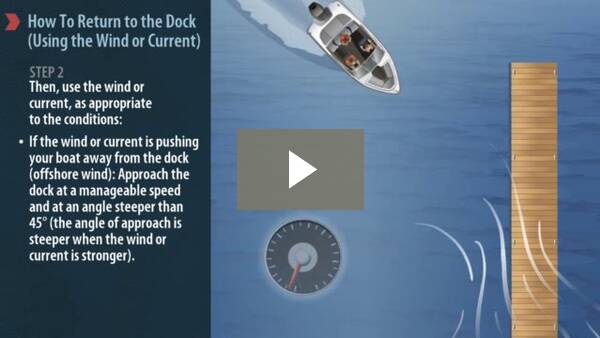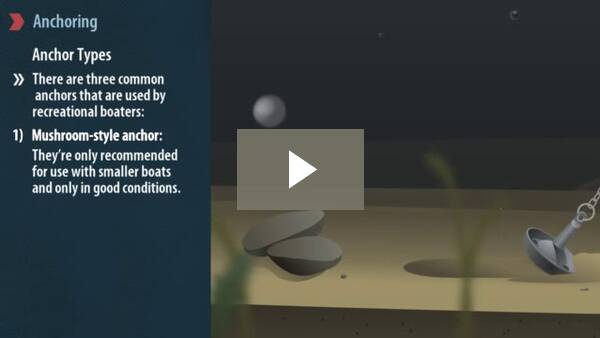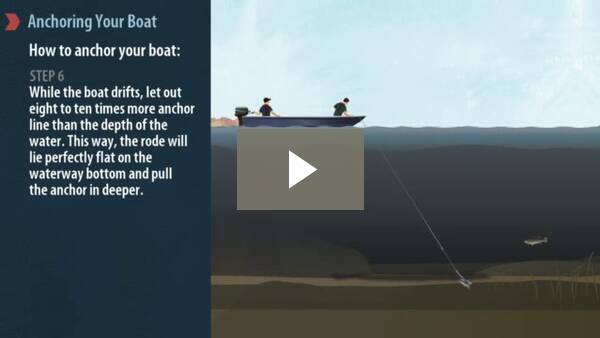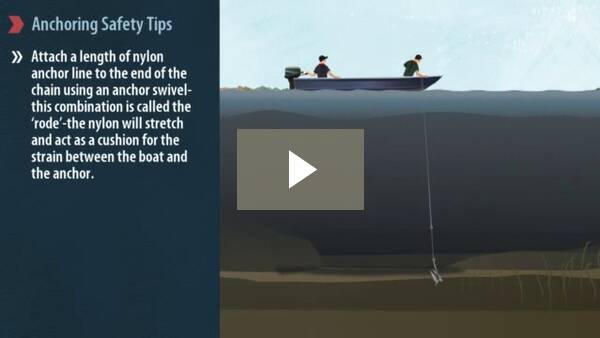Boat Docking Procedures
Just like parking your car in a busy parking lot, docking your boat at a busy marina presents opportunities for your boat to get damaged. Additionally, the weather conditions will have an effect on your docking procedure—wind and current in particular.
To cast off or to return to the dock safely, consider these four factors:
1) The direction of the wind and/or current—is it with or against your direction of travel?
2) The size o f your boat and space at the dock—is there enough room for you to dock safely?
3) The depth of the water—make sure the docking area is deep enough for your boat’s draft.
4) The amount of traffic in the area. Are there other boats or swimmers around?
Casting off from the Dock
Step 1) Make sure your passengers are properly seated with their hands and feet inside the boat.
Step 2) If your boat is equipped with enclosed engine compartments, operate the ventilation system (blower) for at least four minutes before starting the engine.
Step 3) Start the engine. If you’re operating a personal watercraft, make sure that the kill switch (safety lanyard) is securely attached to your wrist or life jacket at all times.
Step 4) Check your surroundings for any obstacles or other boats.
Step 5) Untie the mooring lines and push your boat away from the dock:
- As you leave the dock, the stern of your boat will likely swing back toward the dock—push your boat away from the dock at both the bow and stern.
- Be careful if the wind is pushing your boat toward shore. You may need to operate in reverse, angling the stern away away from the dock before pulling away, to avoid colliding with the dock.
Step 6) Proceed slowly from the dock until it’s safe to increase your speed.
Step 7) Accelerate slowly. Rapid acceleration may cause passengers to lose their balance.
Returning to the Dock (Using the Wind or Current):
Step 1) Ensure all passengers are seated securely with their feet and hands inside the craft.
Step 2) Then, use the wind or current, as appropriate to the conditions:
- If there is no wind or current: Turn your boat slowly as you approach the dock at a 45° angle in order to come to a parallel resting position. If necessary, operate in reverse to control the position of your boat.
- If the wind or current is pushing your boat toward the dock (onshore wind): Approach the dock slowly at a 10° to 20° angle (you want the boat to drift toward the dock).
- If the wind or current is pushing your boat away from the dock (offshore wind): Approach the dock at a manageable speed and at an angle steeper than 45° (the angle of approach is steeper when the wind or current is stronger).
Step 3) Remember that your boat does not have brakes and will require a minimum distance to come to a stop. The stopping distance will also vary depending on speed, load, wind and water conditions.
Memory Tip: There are four key factors to keep in mind when you’re docking your boat:
Here’s a helpful reminder—the acronym for these words (PTWC) is the same as this memorable sentence: ‘Position The Water Craft’.
Anchoring
Although anchors are not required on recreational boats, they’re a valuable piece of safety equipment. They can be used during an engine failure emergency or during bad weather to prevent you from drifting toward obstacles. An anchor can also be very convenient—you’ll need one if you plan to stop and swim or if you plan to stay overnight on your boat.
Anchor Types
Anchors are a part of your boat’s ‘ground tackle’, which includes the anchor line, chain (or ‘rode’) and the anchor itself. There are three common anchors that are used by recreational boaters:
Mushroom-style Anchor
This type of anchor sinks into the mud or sand to maintain a hold. They’re only recommended for use with smaller boats and only in good conditions.
Plow-style Anchor:
This anchor type literally functions like a farmer’s plow. It has strong holding power because it drags along the waterway bottom and digs into the mud or sand.
Fluke-style Anchor:
Also known as the ‘danforth anchor’, this anchor is similar to the plow-style except that it has pointed flukes that dig into the ground to provide holding power and it’s lighter in weight.
Choosing the Right Anchor
Making the right choice depends on the size and weight of your boat, the waterway conditions and the characteristics of the waterway bottom (i.e. if it’s sand, rock or mud). Boat operators should refer to their owner’s manual to view the boat manufacturer’s recommendations for anchors.
How to Anchor Your Boat:
Step 1) Choose a safe area to anchor. Consider boat traffic, obstacles, wind and current.
Step 2) Ensure the inboard end of the anchor line is securely attached to the boat.
Step 3) Ensure the outboard end of the anchor line is securely attached to the anchor.
Step 4) Slowly lower the anchor over the bow until it reaches the waterway bottom. Note the distance to the bottom. Never throw the anchor over the side of the boat.
Step 5) Let the boat drift rearward or operate slowly in reverse to set the anchor.
Step 6) While the boat drifts, let out eight to ten times more anchor line than the depth of the water. This way, the rode will lie perfectly flat on the waterway bottom and pull the anchor in deeper.
Step 7) Once the anchor is set, choose two fixed landmarks on the horizon and occasionally check your relative position to ensure that your boat is not drifting. Remember, if you’re anchoring at night, you must display your boat’s all-round white light.
Step 8) To retrieve the anchor, slowly pull on the anchor line and move the boat forward until the anchor frees itself from the bottom. Then bring the anchor onto the boat and place it in a safe, secure location before getting underway.
Anchoring Safety Tips:
- Attach a 3-6 foot length of galvanized chain to the anchor. A chain will be stronger than an anchor line made of rope and will better withstand abrasion from rocks and sediment.
- Attach a length of nylon anchor line to the end of the chain using an anchor swivel—this combination is called the ‘rode’—the nylon will stretch and act as a cushion for the strain between the boat and the anchor.
- Never secure the anchor to the stern of the boat
Many smaller boats have been swamped and have capsized as a result of stern anchoring. If your boat is attached at the stern, it will swing with the stern into the wind and the oncoming waves may crash over the transom, rather than up against the bow.



